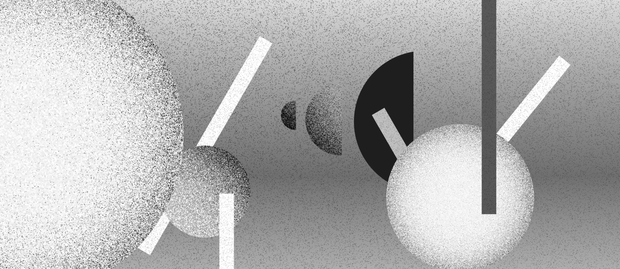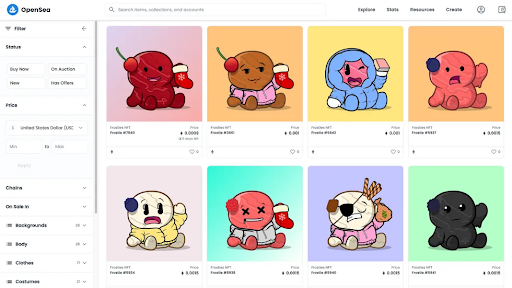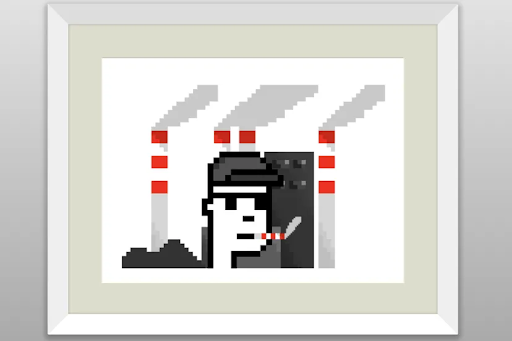
Non-fungible tokens (NFTs) are new digital assets based on blockchain technology that recently have exploded in popularity, with collectors spending millions of dollars on digital artworks. While they enable collectors to verify the provenance and authenticity of assets, NFTs still exist in the digital realm, presenting individuals with challenges and threats not only relevant to traditional art collecting but also more specific to the virtual landscape. Moreover, being in its early stages of development, the NFT market may lack means, such as governmental regulations to enforce security measures, protect intellectual property, and punish criminals.
As a result, art NFT collectors should not only be technologically proficient but also be prepared to address potential challenges, protect their intellectual property, and avoid scams. In this article, we will introduce readers to a range of risks associated with collecting NFT art, discuss some tips for collectors to avoid theft or fraud, and propose more comprehensive solutions.
Risks of the Digital Realm for Art Collecting
While the digital realm has brought transformative opportunities to the world of art collecting, it’s important to acknowledge the potential risks that accompany it. In addition to inherent risks such as market crashes, devaluation, or similar economic factors common to any activity that involves money, the profitable landscape of the NFT industry has also attracted the attention of money scammers. From small-scale operations to grand scams like the $1.1 million stolen by Nguyen and Llacuna, there are various fraudulent activities. Among them are five common scams that collectors should be aware of.

- Rug-Pulls: First, individuals or organizations create hype around their NFTs and build trust among their target audience. Then, the moment these scammers collect enough funds, they shut down the entire project and vanish into oblivion, leaving supporters with nothing.
- Phishing: These scams are the most common in the NFT scene, as seen in February 2022, when nearly $1.7 million worth of NFTs were lost. The fraud is relatively simple, as hackers only need to send a fake link. In this scenario, a buyer enters the account details, which are momentarily transferred to the scammer. From that point onward, the scammer can access the wallet account and steal any assets, including NFTs or crypto.
- Bidding Scams: Mostly occurring in the secondary market, bidding scams involve cases where the cryptocurrency used for the transaction is switched to another. For example, a scammer might place the highest bid of 8 ETH, equivalent to $15,000. Once the overjoyed seller agrees to the sale, the scammer switches to a different cryptocurrency like ETH Fan Token, which costs just $0.000000001 (both examples are based on the prevailing rates at the time of writing).
- Pump-and-Dump: In this case, scammers hype up their NFT offerings using various methods to artificially inflate the price. Some create several accounts and establish transaction histories that can interest actual buyers. Others invest in bots, journalists, or influencers to promote their NFTs and make them appear as worthwhile purchases. However, after buying such NFTs, collectors understand their true value, or rather, the lack of it.
- Plagiarism: Although NFTs represent unique digital tokens, plagiarism has been one of the primary concerns among creators and collectors alike. At some point, more than 80% of assets on the major NFT marketplace, OpenSea, were plagiarized or completely stolen. As a consequence, collectors not only voice legal and ethical concerns but also question the value of such NFTs.
Thus, while the digital realm offers exciting opportunities, there are also threats that require collectors to remain vigilant and adaptable. However, despite the potentially daunting nature of the situation, there are enough ways to enhance the security of the art NFT collecting experience.
How to Prepare For The Purchase of Art NFTs
Do Your Research: Before you buy an NFT, it is important to research its provenance, transaction history, public opinion, and background of the NFT creator. While certain pieces of this information might be distorted, gathering as much data as possible will help distinguish real offers from scams. At the very least, you'll be able to approach the purchase more cautiously. For example, checking the artist's website or social media pages can serve as a good starting point.
Stay Vigilant When Dealing With Sellers: Phishing scams tend to target inexperienced, careless, or impatient NFT collectors. Typically involving fake emails or text messages, these scams exploit our false sense of security and fear of missing an opportunity, compelling us to act hastily. For example, you might receive messages like "Update the details or your account will be blocked" or suggestions to buy NFTs in ways not intended by the platforms. In the first case, just contact the platform or service provider through official emails or phone numbers. This will allow you to verify the claims in exchange for a few minutes, rather than risking thousands of dollars. In the second case, insist on following proper procedures. In the worst-case scenario, you'll miss out on one deal, not a fortune. To summarize, always confirm claims in messages and never share personal details with anyone you don't trust.
Use Reputable Marketplaces: When buyers search for items online, they should choose time-proven marketplaces like Amazon or eBay instead of questionable ones. The same rule applies to the NFT industry. Opt for the most popular NFT marketplaces, such as OpenSea, Rarible, or Foundation, which implement measures to protect buyers from fraud. Another option is to purchase NFT art from marketplaces that collaborate with real galleries and creators.
How to Protect Your Digital Assets Afterward
Store Your NFTs in a Secure Wallet: Just as we seek out a trustworthy bank to store our money and valuables, NFT buyers should similarly find a secure wallet to keep their digital assets safe. Numerous providers offer NFT wallets, which can be categorized into two groups:
- Software: Similar to PayPal, these wallets can be downloaded on your phone or accessed through web portals. Among the most popular options are Zenga, MetaMask, OKX, and Coinbase Wallet. Ensure you choose one with a solid reputation and security features such as two-factor authentication.
- Hardware: These are compact physical devices where you can store your crypto and NFT assets offline. Compared to software wallets, these devices offer an impenetrable defense, as hackers would need to physically steal them to access your digital assets. However, opting for a hardware wallet requires users to back up and secure their seed phrases and private keys. Moreover, signing transactions might require more time and manual manipulation.
Keep Your Security Software Updated: Just as security software aims to protect your data from attacks, hackers strive to find ways to breach your digital defense. Therefore, the least you can do is to arm yourself with antivirus programs, VPNs, and firewalls and keep them up-to-date. These simple measures will help safeguard your devices from malware and prevent your data from being easily stolen. In addition, remember to use a strong password and enable two-factor authentication. While these methods might appear insignificant, when combined, they form an impenetrable shield against theft and fraud.
Report Fraud: Although the NFT industry is mostly unregulated and lacks significant safeguards for buyers and sellers, we strongly encourage you to report cases of theft or fraud to authorities, platform administrators, and even journalists. While success is not guaranteed, reporting increases the chances of returning your assets. For example, in 2021, a collector purchased a fake Banksy's NFT for £244 000. However, due to press coverage and the identification of the scammer on Twitter, the entire sum was returned to the bidder. To summarize, persistence is key, don't give up too soon.

Ultimately, the experience of collecting artworks in the form of NFTs is similar to regular online shopping. Although in the latter there is a chance of being scammed, we still purchase goods from Amazon, eBay, AliExpress, Wish, or our local marketplaces. The same should apply to art NFT acquisition, as all you need to do is pay more attention or opt for services of companies like Digitised.Art, whose reputation has been supported by partnerships with actual NFT galleries.
With us, you not only streamline negotiations and ensure proper due diligence but also get access to the most exquisite NFT artworks without markup or plagiarism.
Related articles




